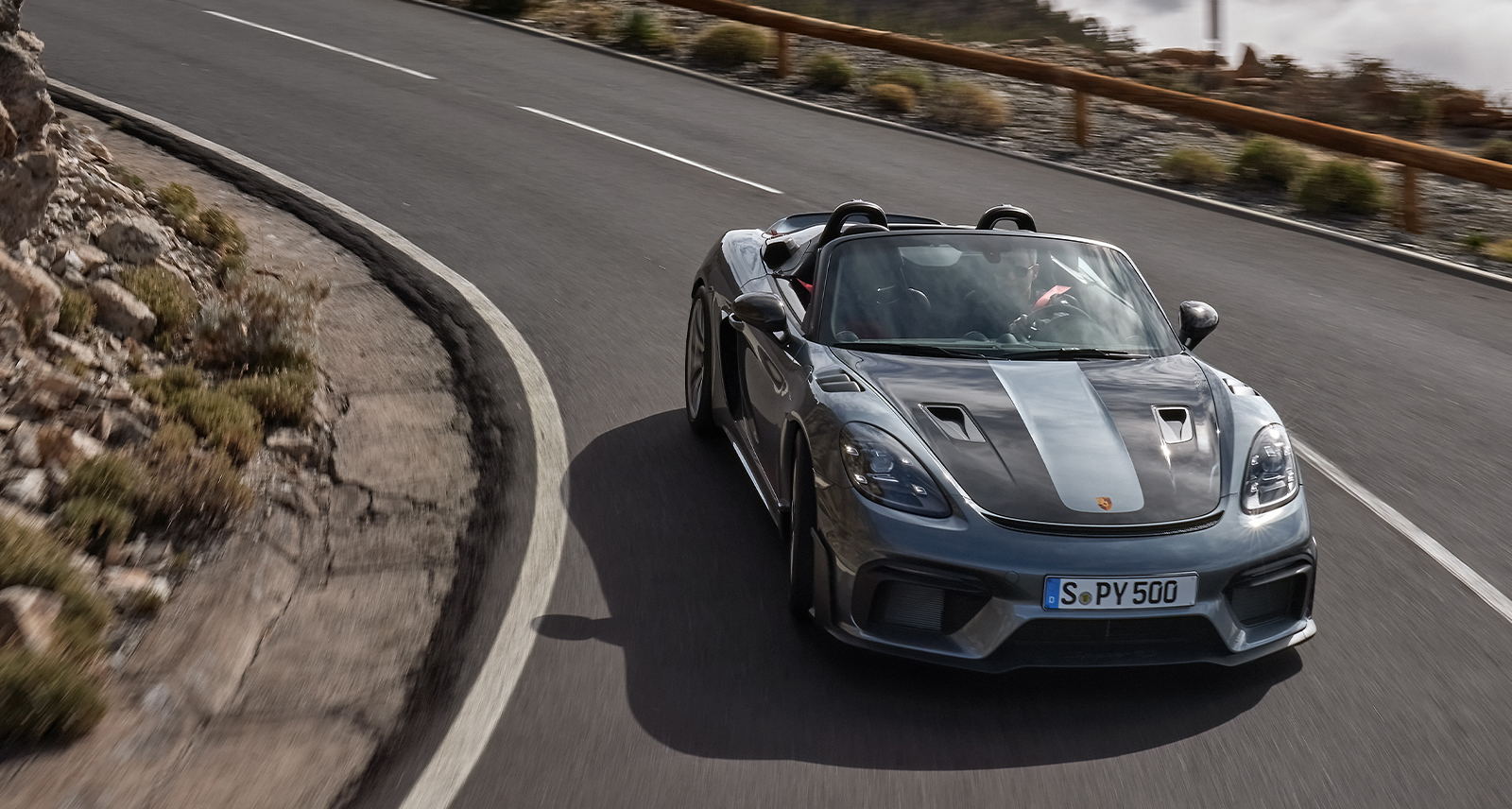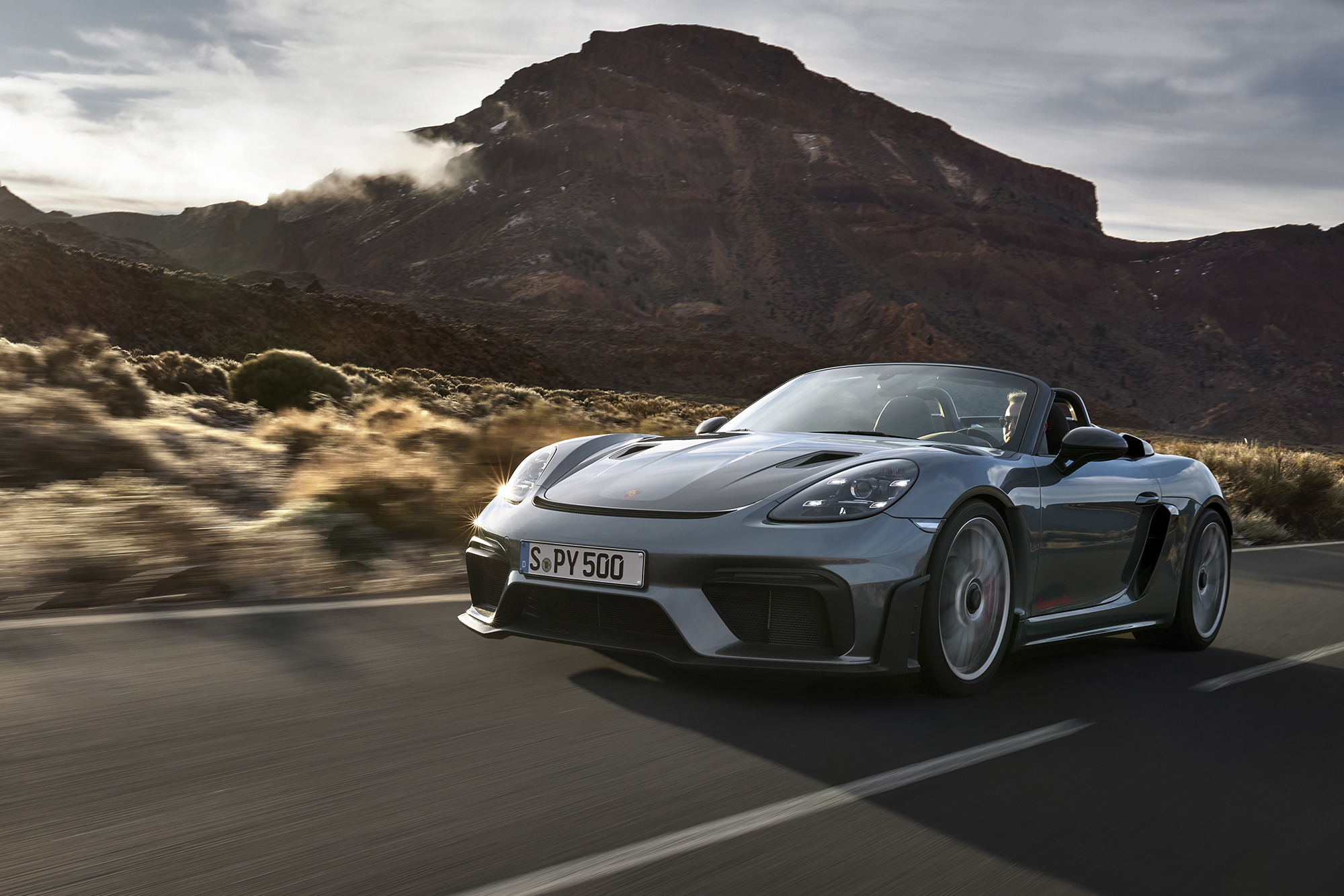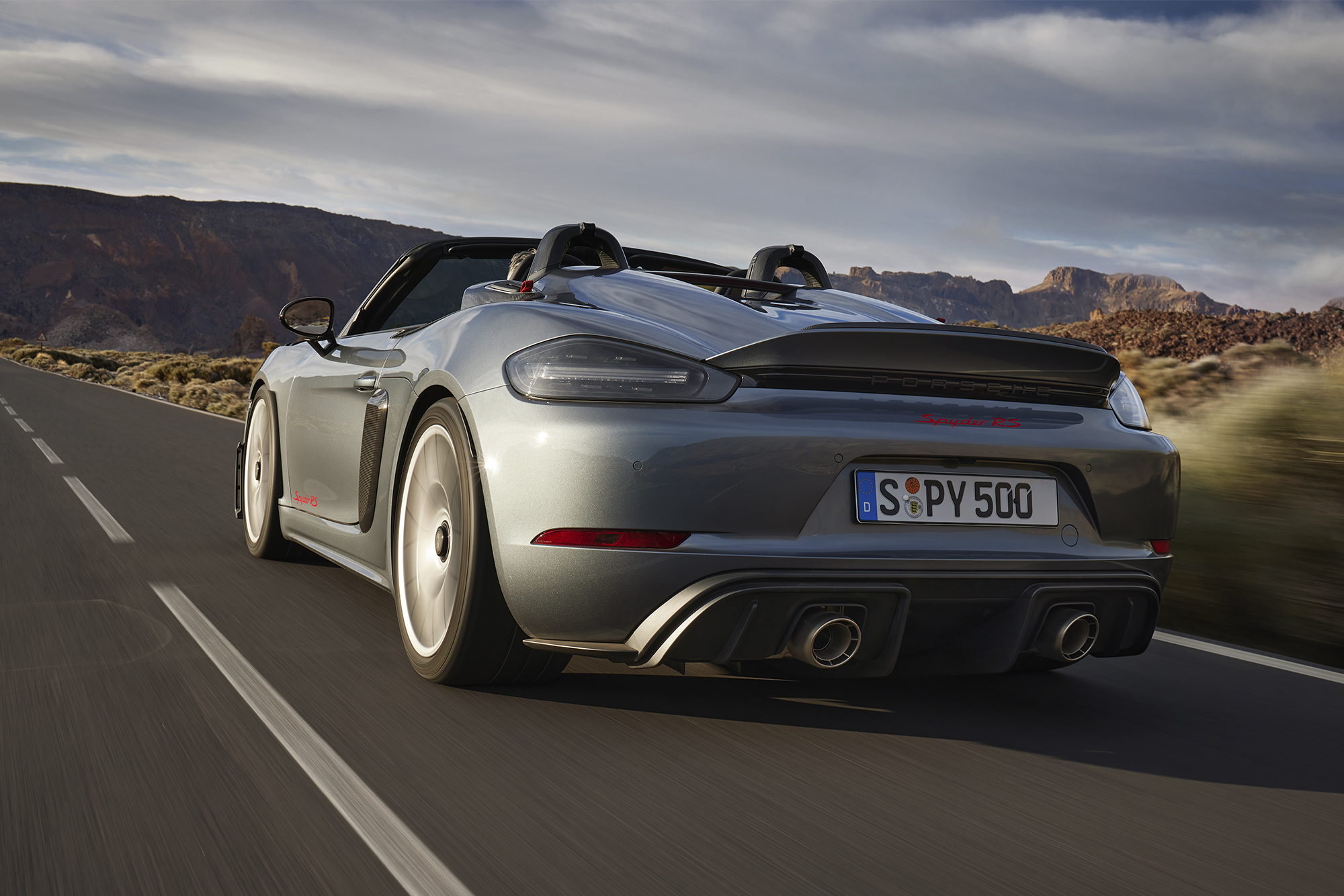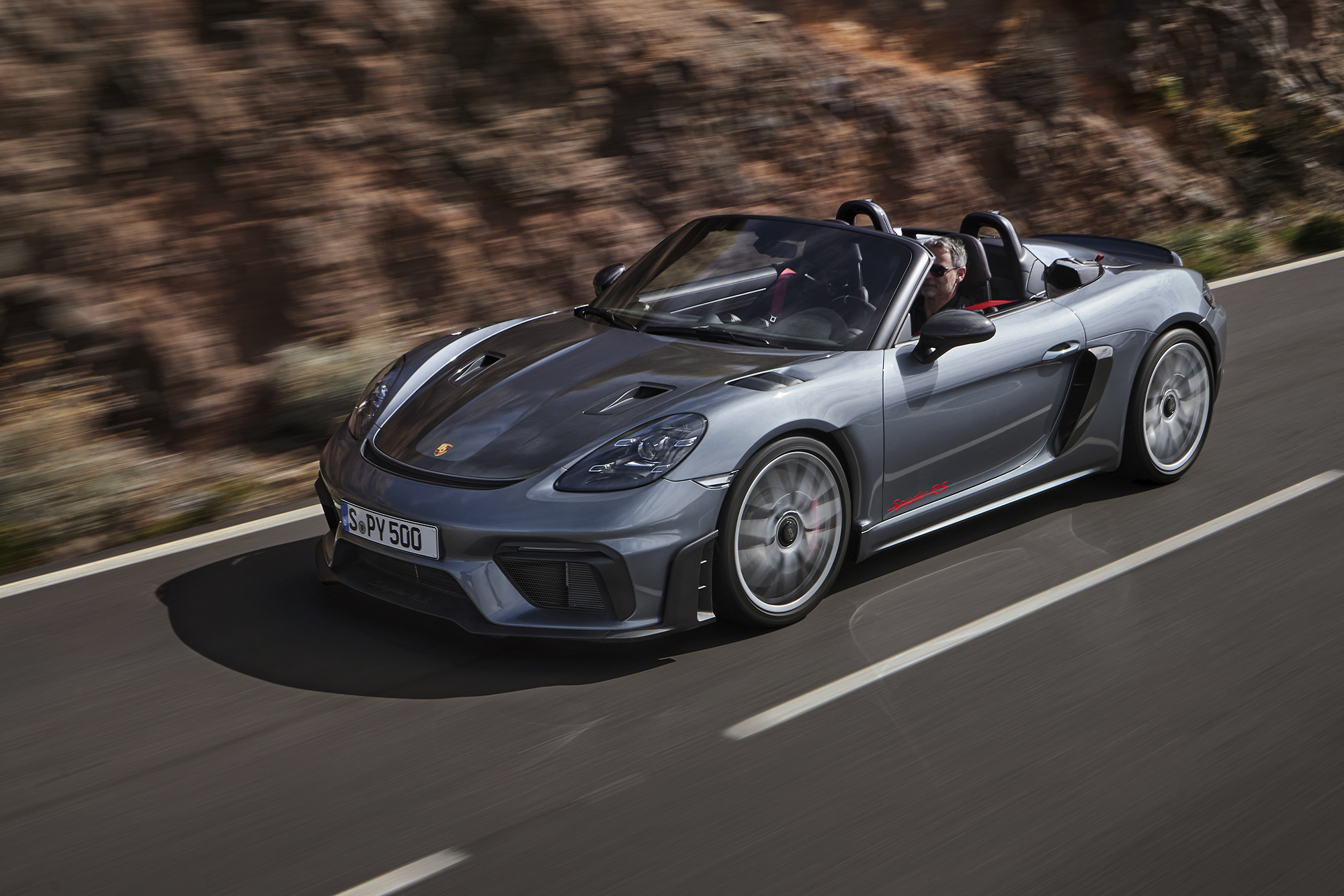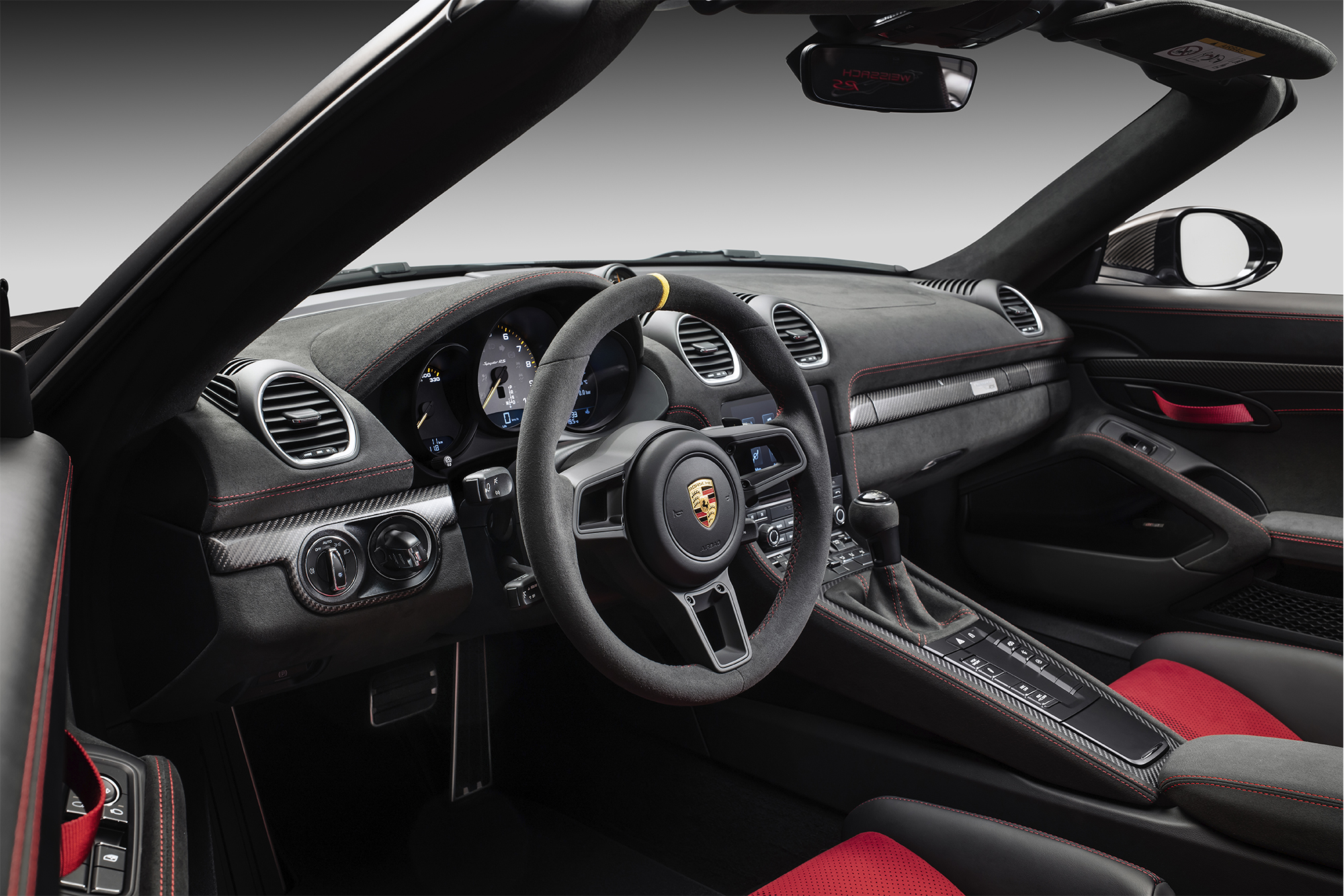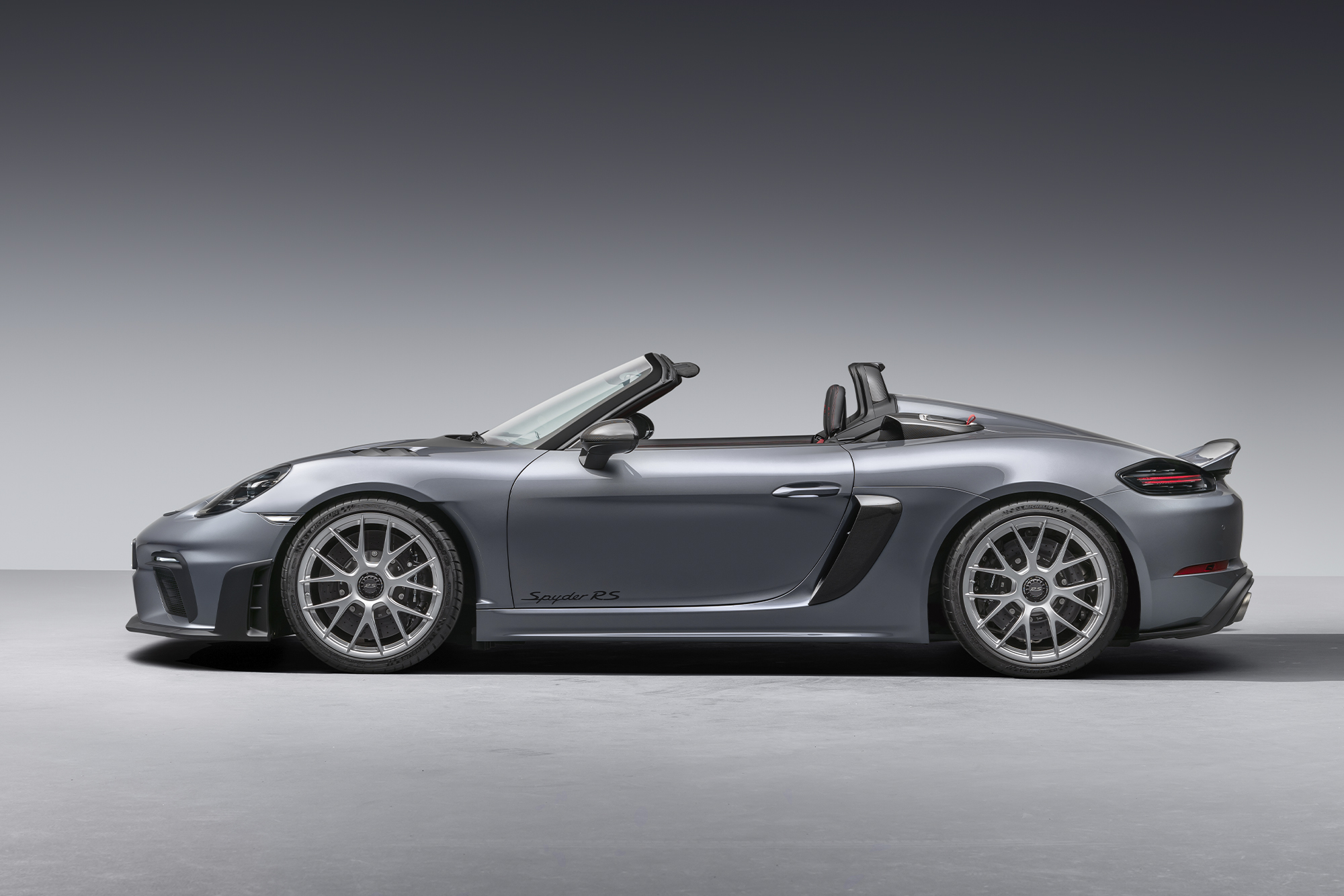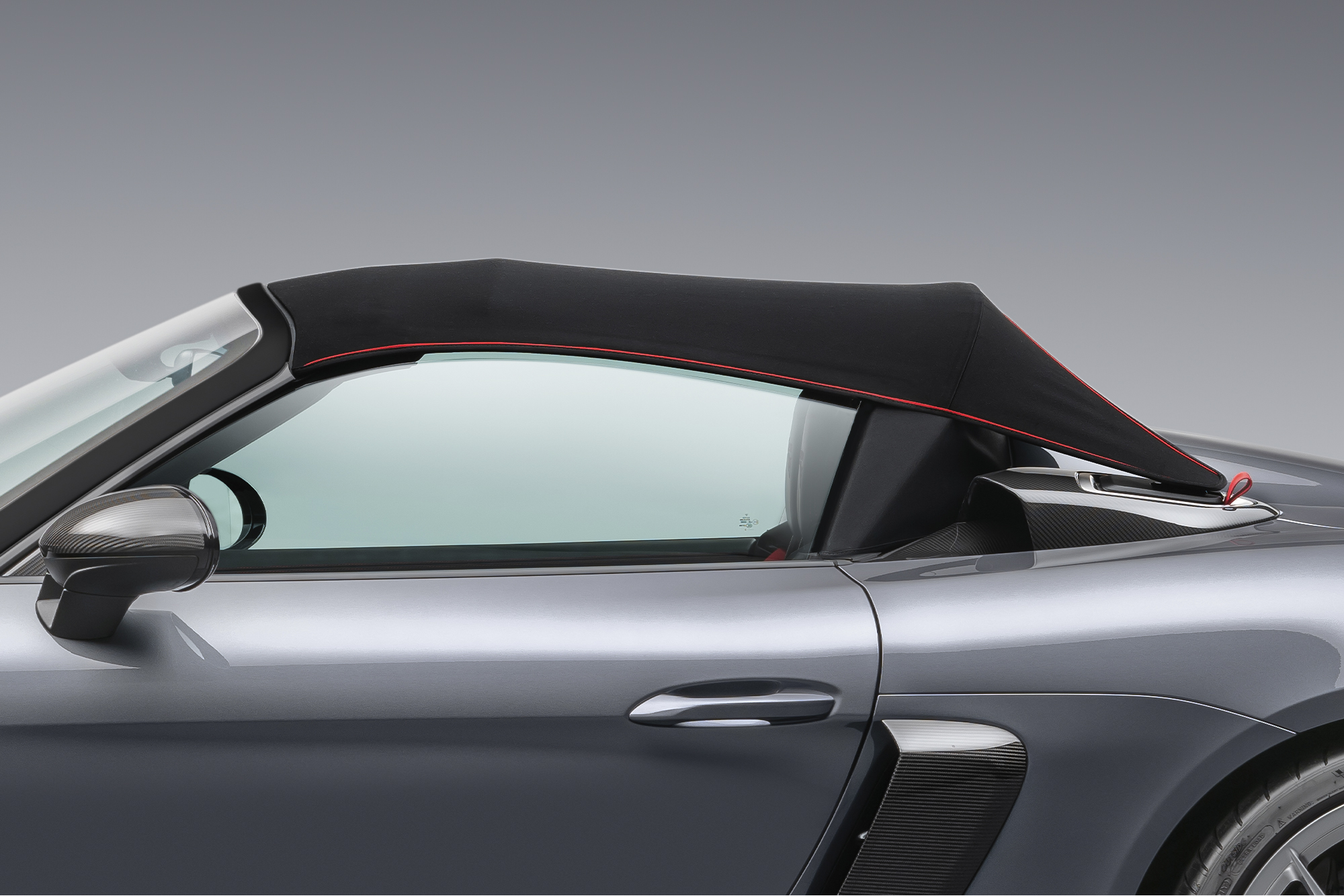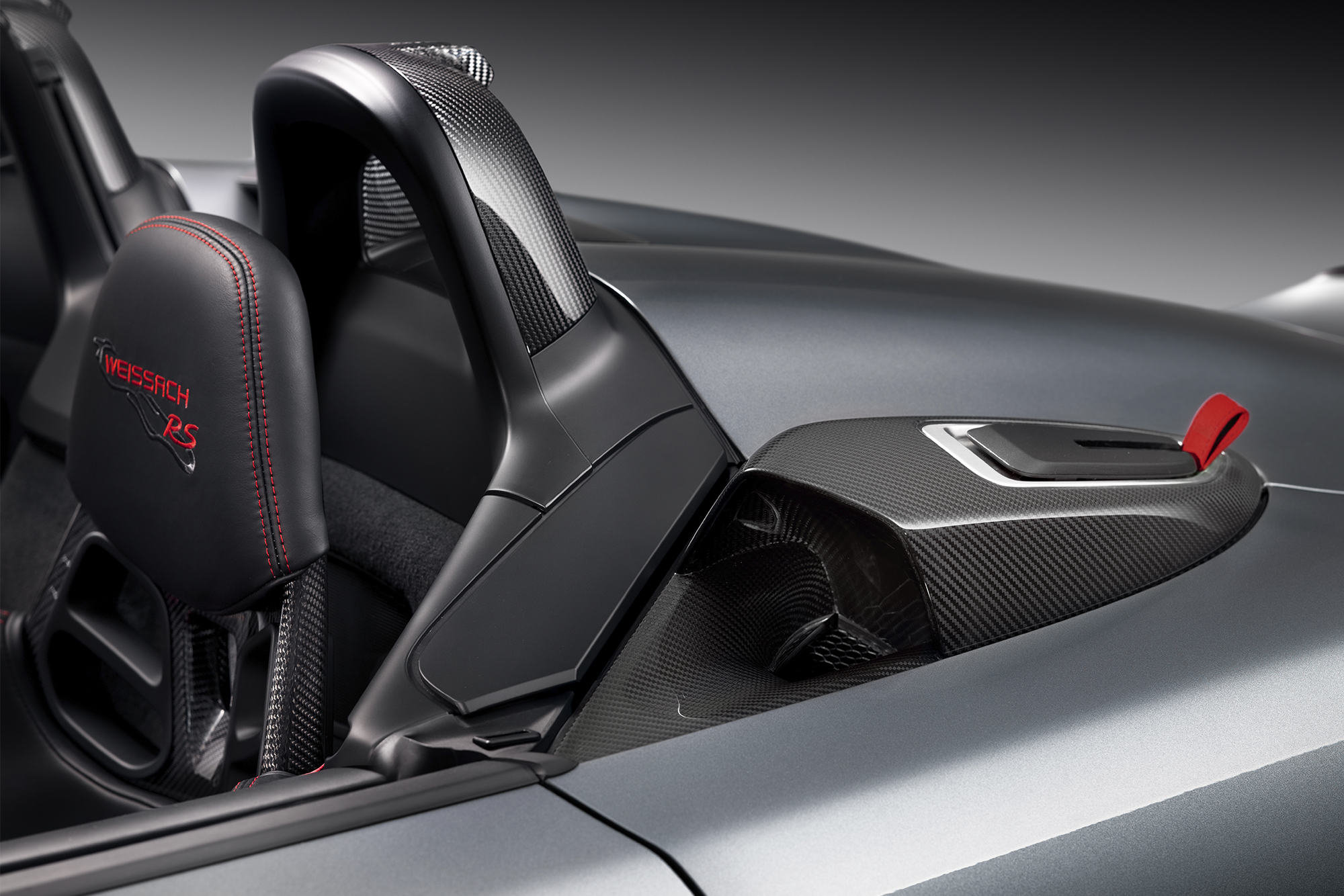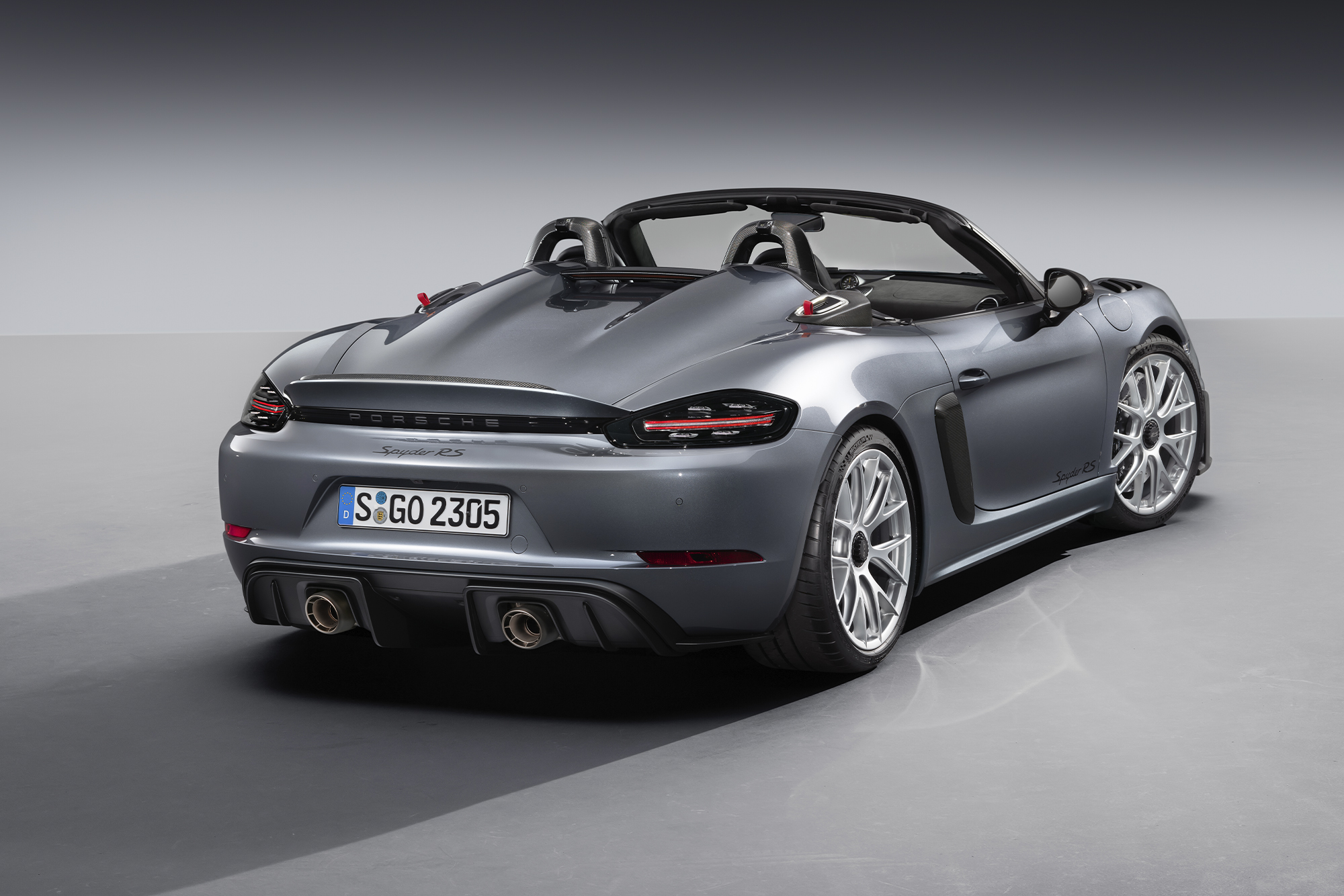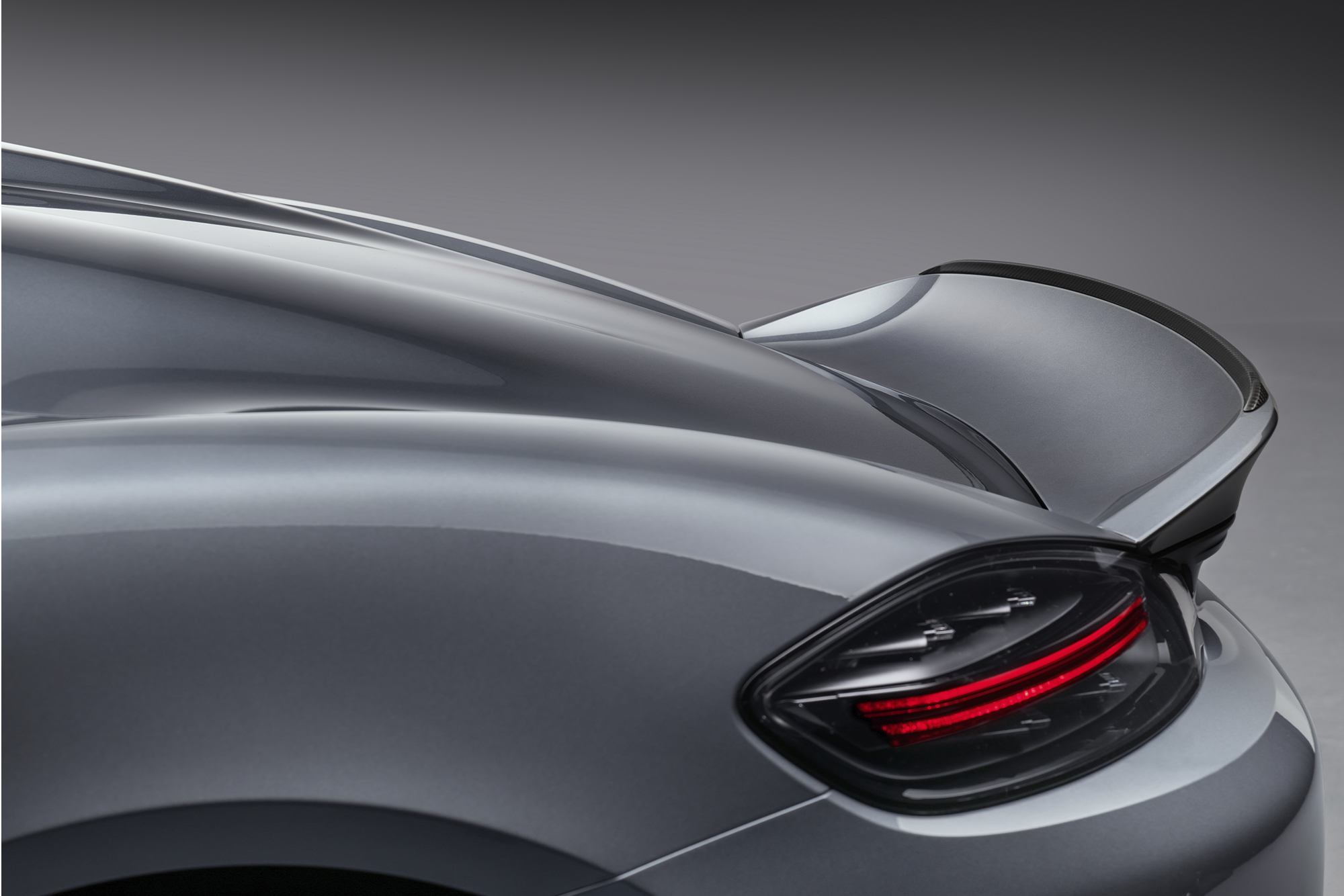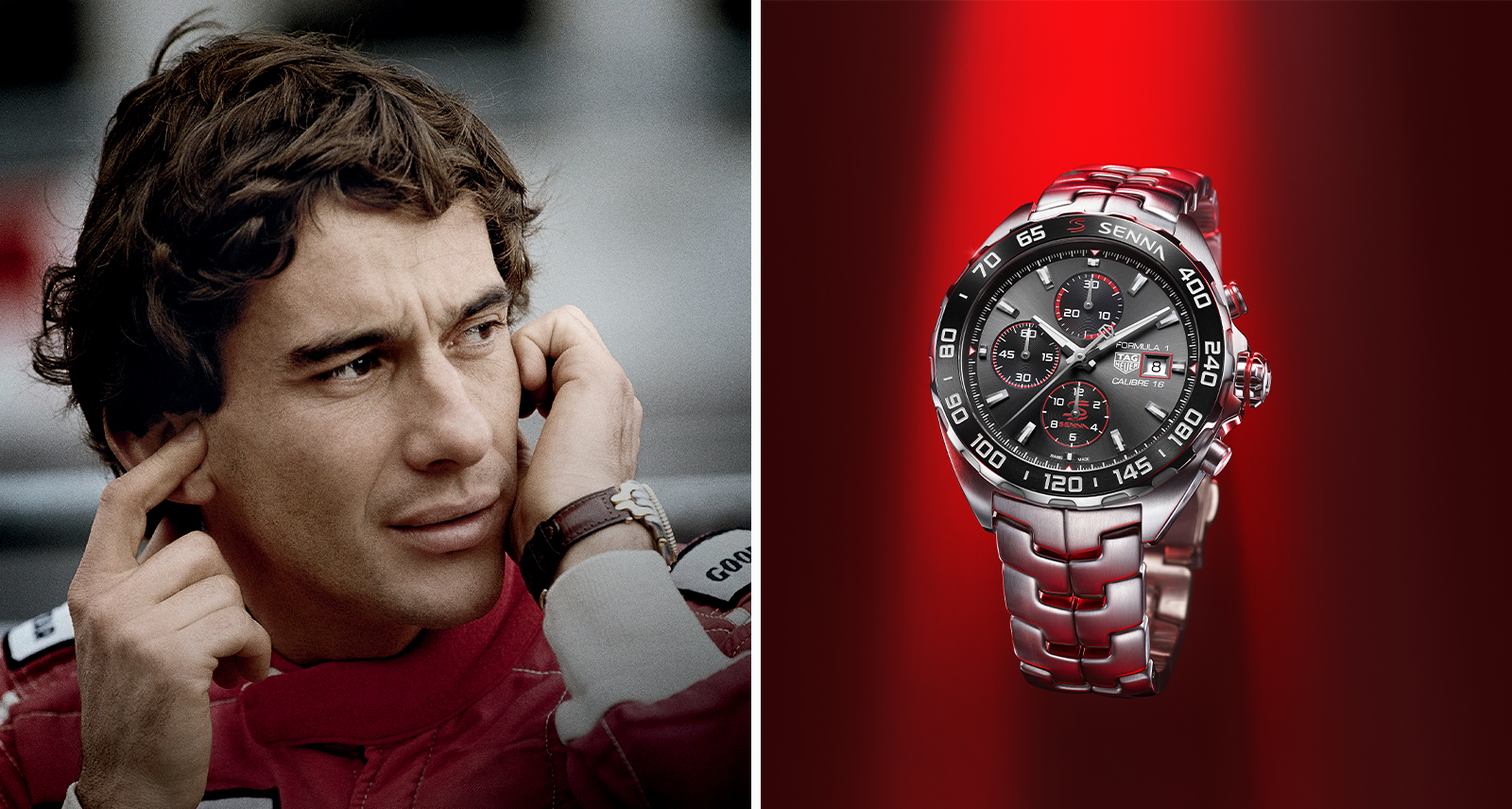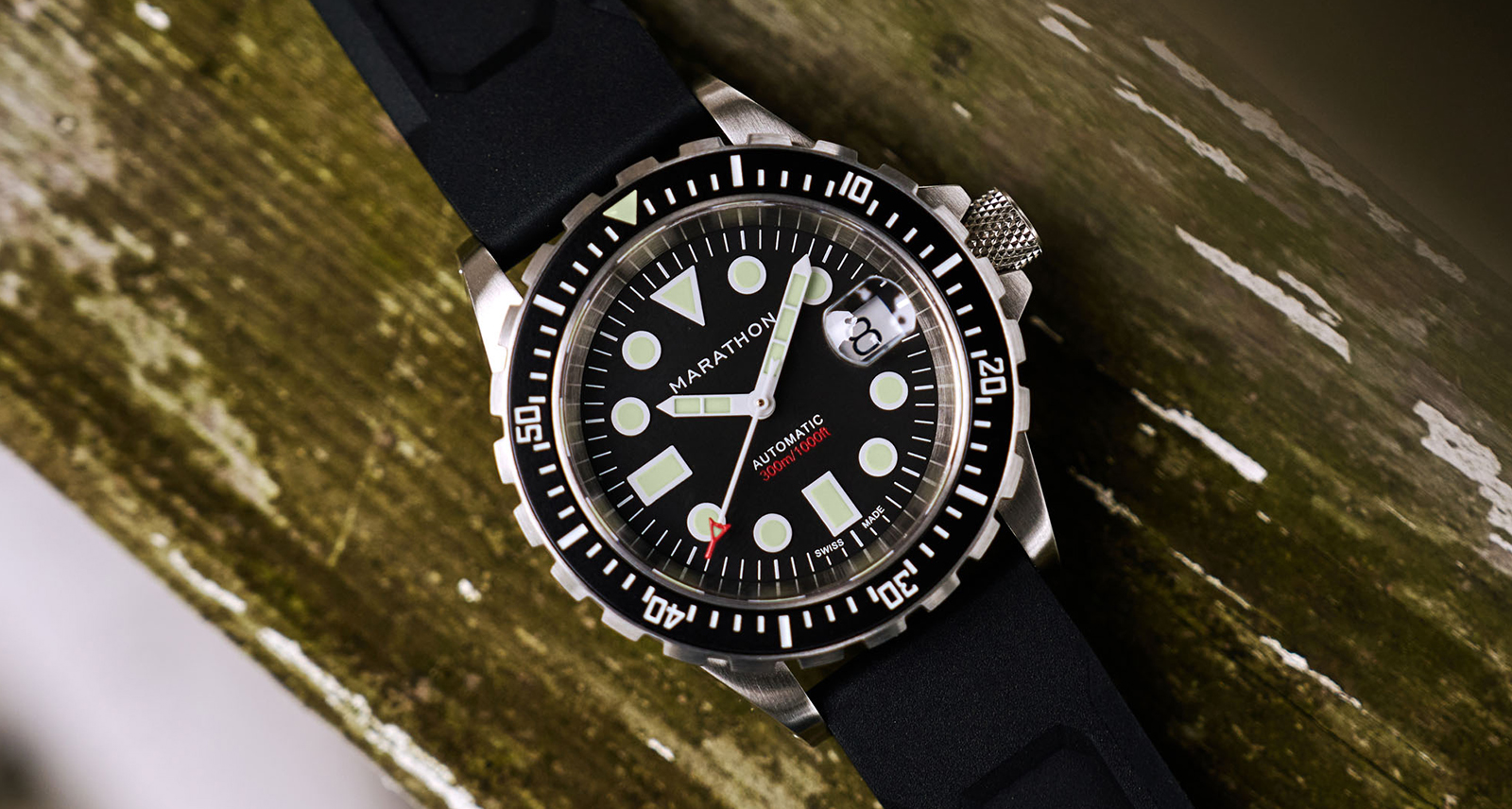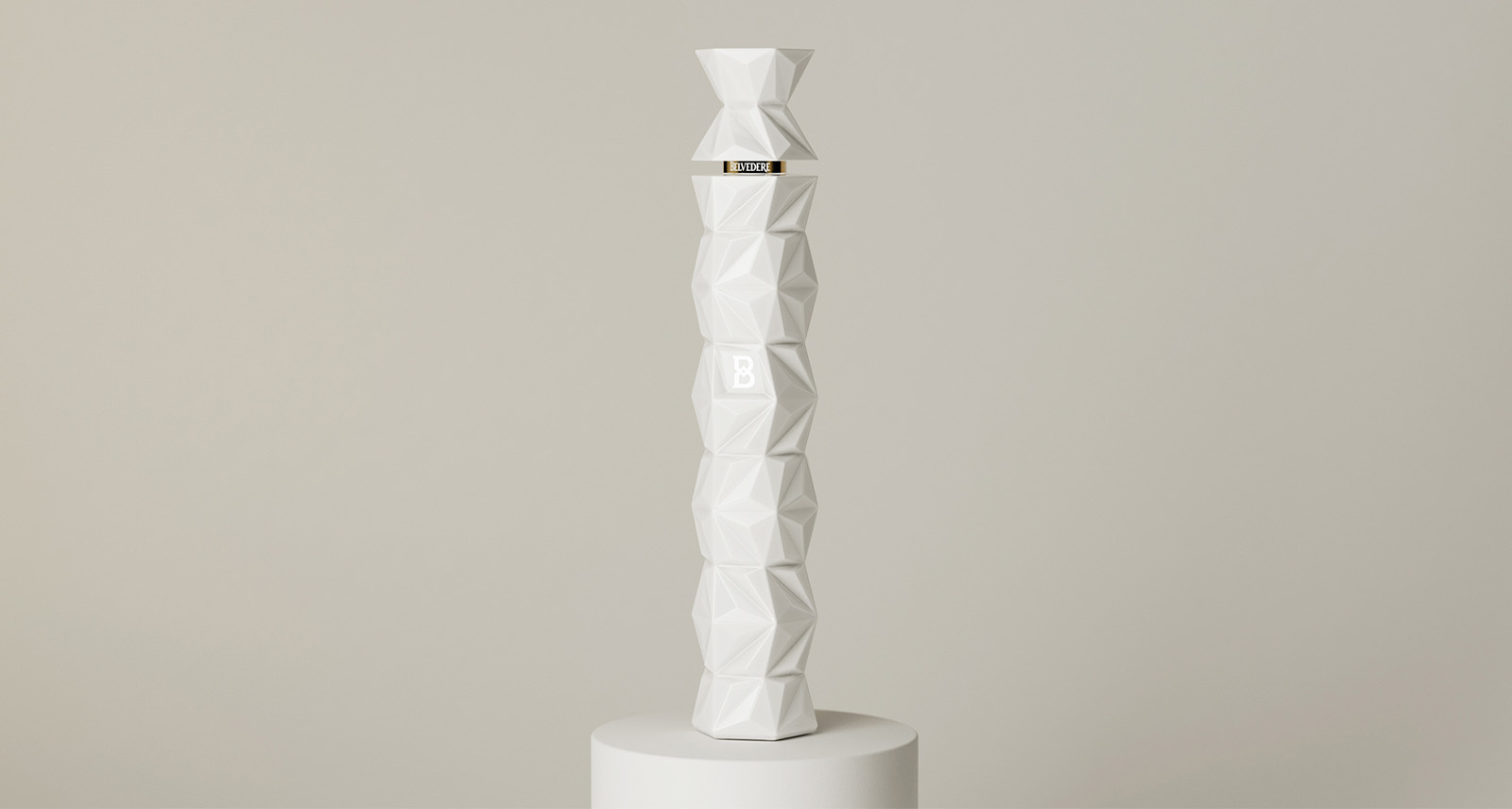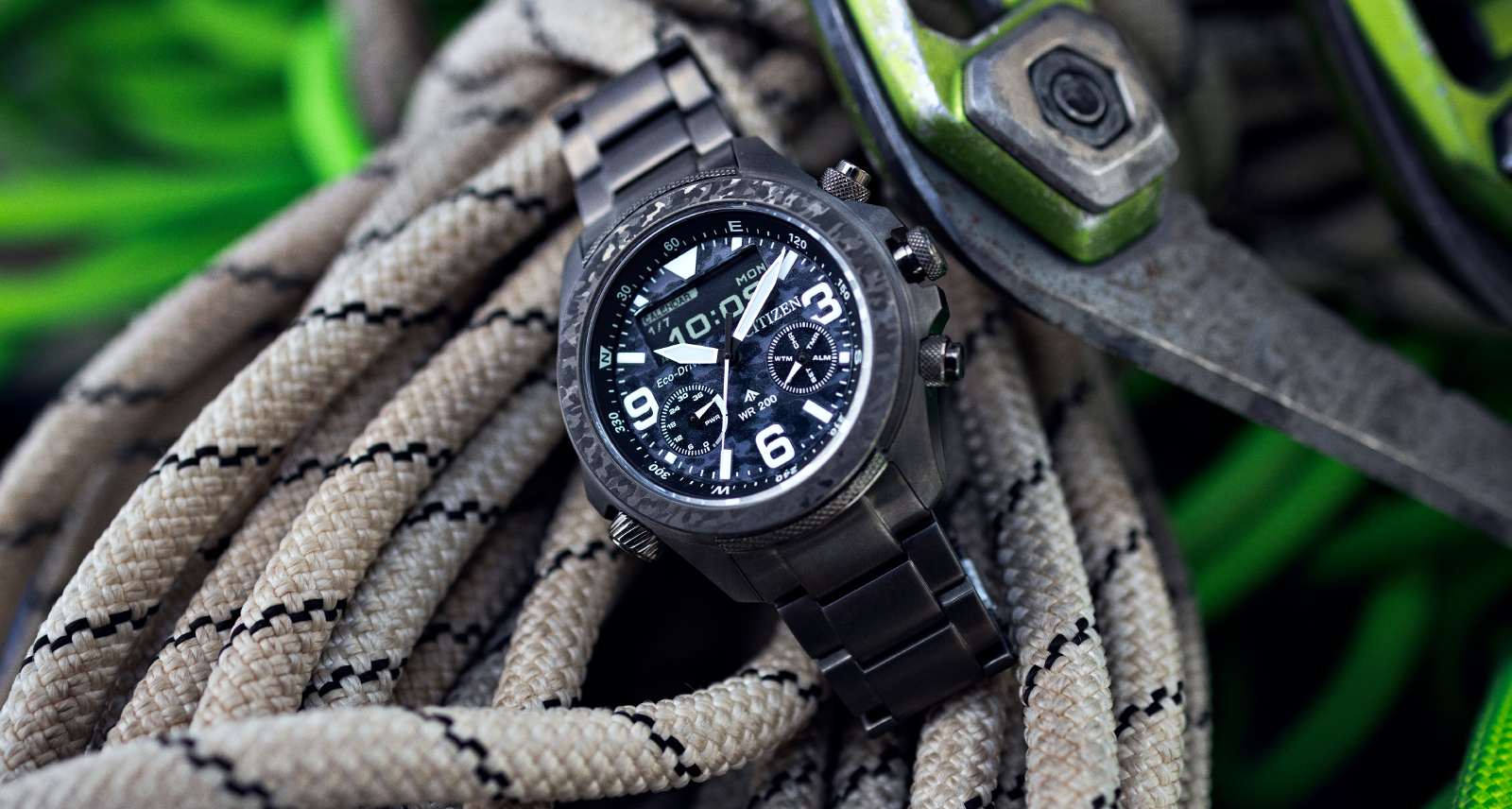718 Spyder RS: Porsche Parks Its Most Extreme Convertible Yet
Collectors, start your chequebooks. Porsche recently surprised everyone with an unprecedented new RS model, dubbed the 718 Spyder RS. As with most Porsche cars that wear the RS badge, expect this one to be an instant classic.
What you’re looking at here is a 9,000 rpm, naturally-aspirated, featherweight two-seater track-day weapon that’ll leave your head spinning and ears ringing. It’ll also leave an $188,800 hole in your bank balance. (Actually, as far as Porsche prices go these days, that’s not so bad.)
The new 718 Spyder RS takes the 718 Spyder — which, for years now, has been the purists’ sports car of choice — and cranks everything up to 11. It’s lighter, more powerful, more angry-looking and even quicker. It’s essentially a Cayman GT4 RS, without the roof. So, yes, it’ll be loud.
The new Spyder RS is the ultimate evolution of the Porsche Boxster; 30 years ago, nobody ever imagined the friendly little Boxster cabriolet would eventually turn into a track-day monster like this.
The new drop-top is also, perhaps, an acknowledgment of the fact that Porsche’s next-generation 718 will be all-electric. And, not long after that, the gas-powered 718 will be discontinued all together. That’s why the 718 Spyder RS has a kind of last-days-of-Rome vibe.
In truth, Porsche’s GT department probably could’ve phoned this one in and the collectors would’ve still been lining up to get one. But, Porsche’s GT department — makers of the legendary 911 GT3 — don’t know how to phone things in. They do things the hard way.
Case in point: the team developed an all-new roof just for the Spyder RS in order to ensure it was exactly as powerful Cayman GT4 RS. You see, the engine needs air-intakes positioned just so, but those air-intakes interfere with the Spyder’s folding roof mechanism. So, the GT department scrapped the roof, developing a new single-layer cloth top that provides minimal, bikini-level coverage, and added a pair of carbon-fibre air scoops to suck air into the motor. They’re positioned right next to occupants’ ears; you may want ear plugs if you’re planning a long drive.
As a result of all that meticulous work, the car’s 4.0-litre naturally-aspirated flat-six — which is pulled straight from the 911 GT3 — makes the exact same 493 horsepower and 331 lb-ft of torque as it does in the fixed-roof GT4 RS. Would anyone have noticed if the drop-top Spyder RS was down a couple of ponies? No. But, remember: Porsche’s GT division does things the hard way.
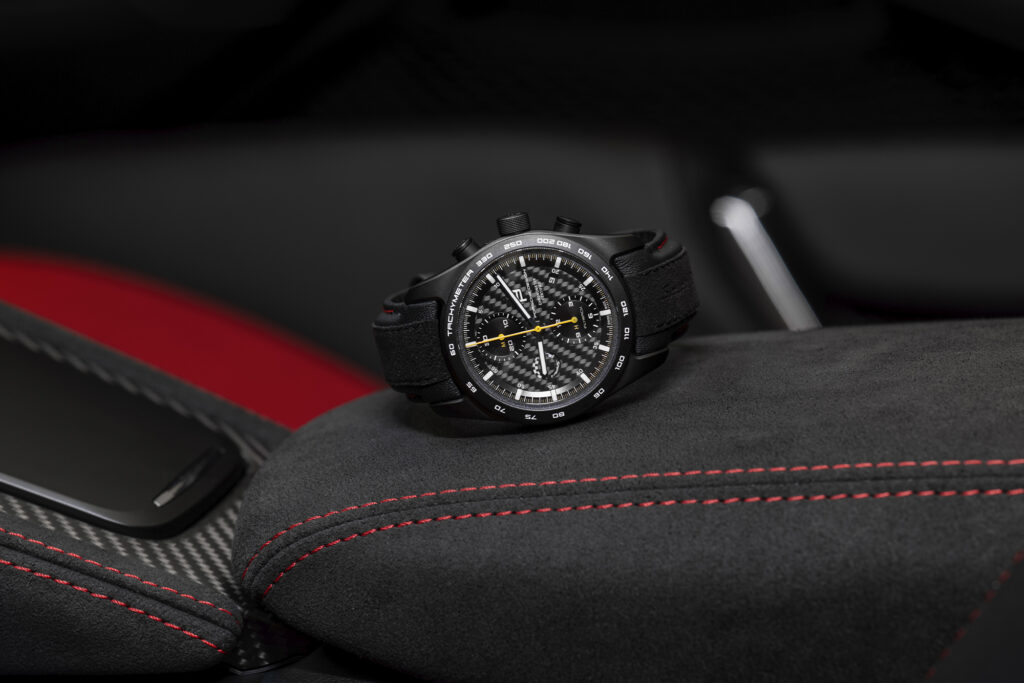
Without the roof, the Spyder RS weighs 40 kilograms less than the 718 Spyder and is five kilos lighter even than the Cayman GT4 RS. Compared to the non-RS Spyder, this car has an additional 79 hp and gets to 100 km/h half a second faster. It’ll top out at 308 km/h, instead of a paltry 300 km/h.
The new manually-operated roof is an interesting two part design, consisting of a “sun sail” and a weather deflector. As Porsche explains, “the sun sail alone can also be used as a ‘Bimini top’, thereby protecting the driver and front passenger from intense sunlight. In this case, the passenger compartment remains largely open to the side and behind the passengers.” In other words, you get the best of both worlds: open air motoring without the sunburn.
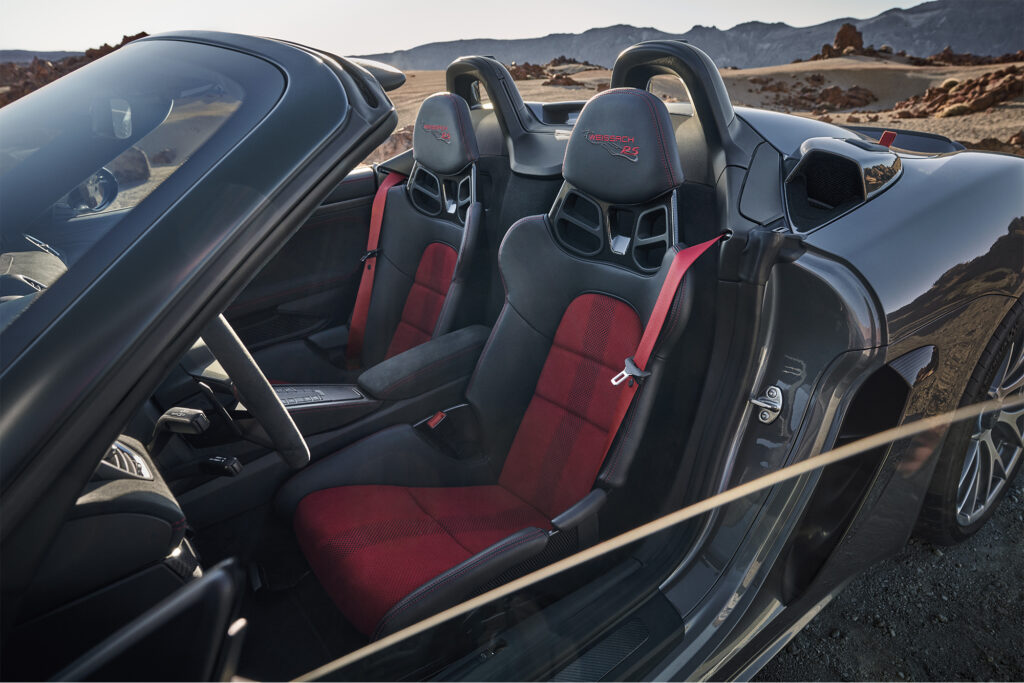
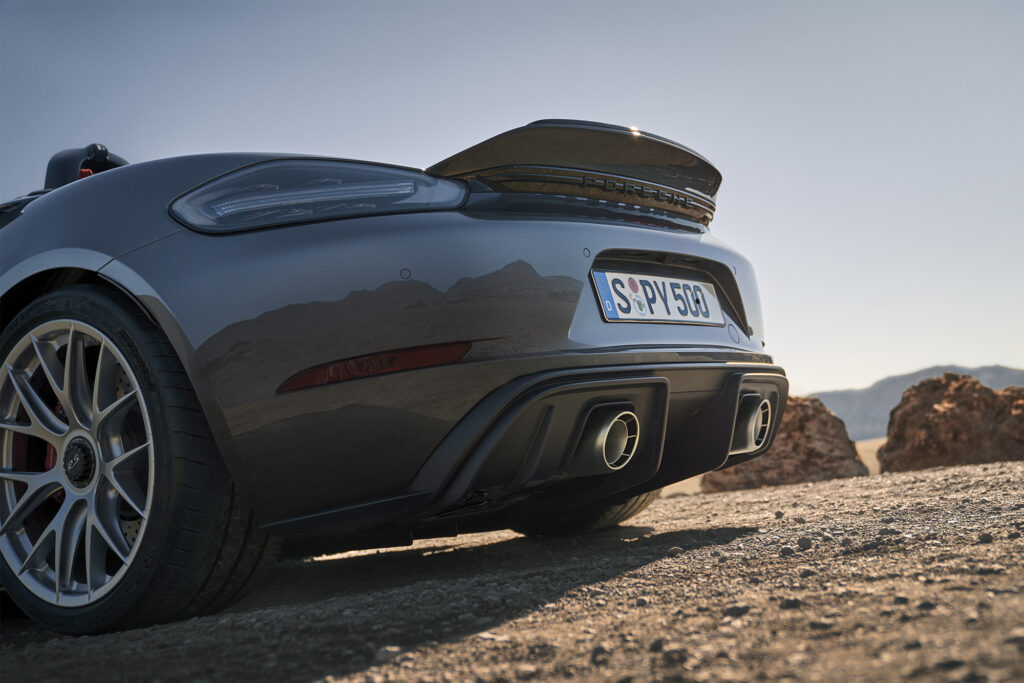
As a cherry on top, buyers can also purchase an exclusive watch from Porsche Design. It’s built in Solothurn, Switzerland, and designed to match the car with a lightweight titanium case and carbon dial.
There is, however, one compromise buyers of the RS must make. While you gain in power and exclusivity, you lose in the sublime six-speed manual that makes the regular Spyder such a delight. That’s a big sacrifice for a little extra power, sharper handling and some carbon bits. But, the RS is not a car for most drivers; it’s cat-nip for collectors and professional-level tool for diehard track rats. If that’s you, act fast.
